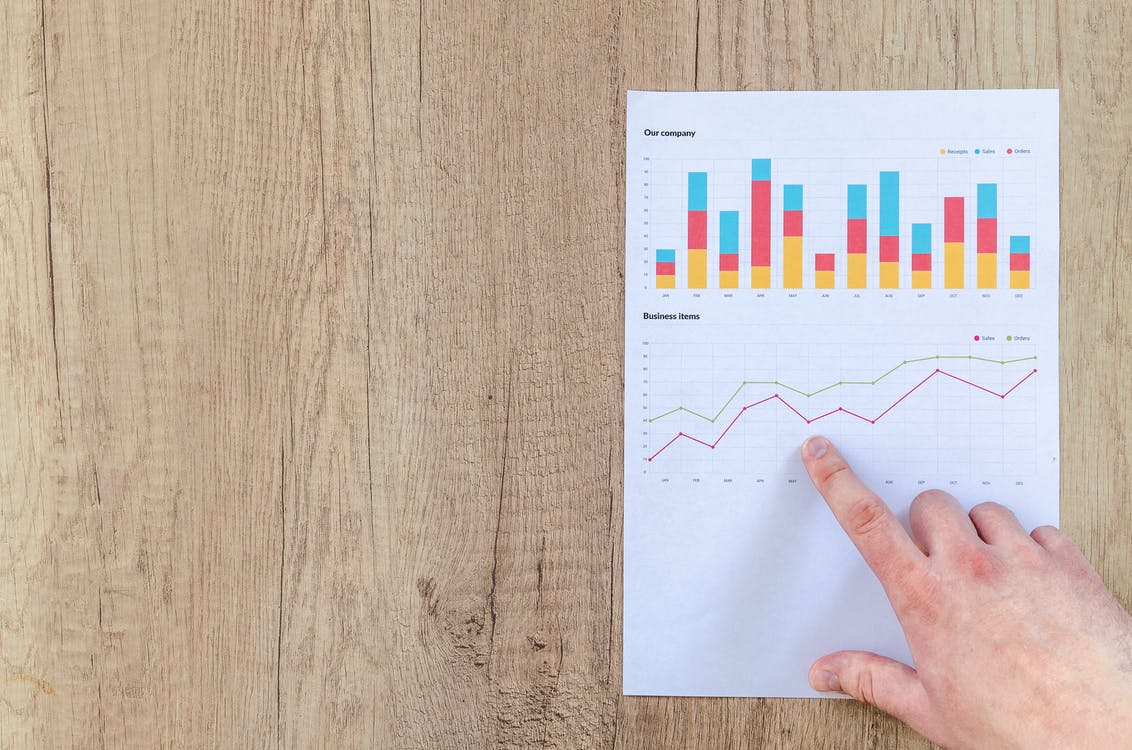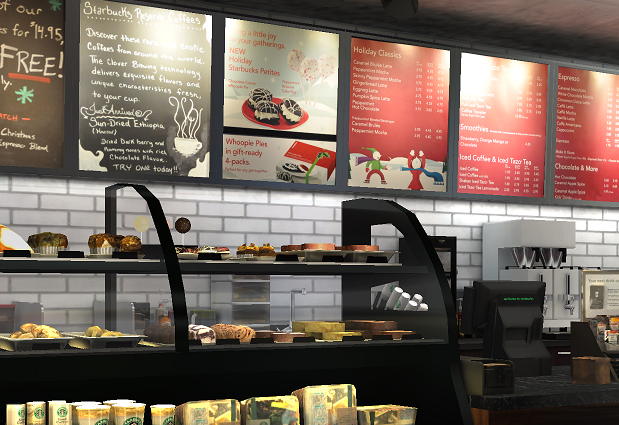If you’re a part of the retail industry today, you know that it’s not an easy endeavor to compete with the various big-name retailers and brands on the market. What was once an industry that required a relatively straightforward merchandising and marketing strategy is now complex and faced with constantly evolving competition and changing best practices.
What’s more, the methods and tools available today to track KPI retail metrics are numerous, which means it can be an overwhelming process to identify which metrics are the most essential for driving growth.
You probably find yourself asking questions like, should we prioritize certain KPIs simply because it’s what everyone else in the industry is doing? How do we know which ones will address our unique problems? It doesn’t make sense to always focus on every metric available. There are some that matter more than others. That’s the topic we’re diving into today: identifying the essential KPI retail metrics to track and optimize.
What You Need to Know About KPIs
What are retail KPIs?
Most of us have some understanding of key performance indicators (KPIs) and how they function. But having a solid grasp on the concept and going back to the roots of why we track certain aspects of performance can help you more accurately and successfully use them.
According to the KPI Institute, a KPI is defined as:
“A measurable expression for the achievement of a desired level of results, in an area relevant to the evaluated entity’s activity. KPIs make objectives quantifiable, providing visibility into the performance of individuals, teams, departments and organizations and enabling decision makers to take action in achieving the desired outcomes. Typically, KPIs are monitored and communicated through dashboards, scorecards and other forms of performance reports.”
In simpler terms, KPIs measure the most important metrics: the ones that tell you if you’re meeting your goals or if you’re falling short.
KPI Background
While performance management in some capacity has been around for centuries, strategic performance management used in the way we see it today didn’t truly emerge until the mid 20th century when Peter Drucker published Concept of the Corporation in 1946. What followed was an increased interest in management and performance strategy throughout the century.
Then in the 1990s, corporate America went through what one might call a performance management revolution. Perhaps it was the economic prosperity of the time or the rapidly advancing technology, but businesses and academics really changed the game. They learned the best ways to track performance and established the terminology and best practices that we look to today. While many of those essential principles of performance management are very present today, the technologies and strategies we use to approach them are constantly evolving.
Why are KPIs necessary?
So why exactly do you need to track all these small details? In today’s world where every major retailer and brand out there has a painstakingly fine-tuned retail marketing strategy, the value of data is more apparent than ever.
Since most brands and retailers have excellent creative marketing teams, you can’t beat out the competition with just a stellar new idea anymore. Not to mention, e-commerce and omnichannel marketing have created a lot of steep competition, so retail stores need something extra to retain customers. Creativity and instinct may take you far, but isn’t enough to sustain growth in today’s retail industry. Instead, your strategies should be informed by your findings.
The idea behind tracking valuable metrics (in other words, metrics that go deeper than just looking at total revenue) is that you can spot possible declines in performance and nip the issue in the bud before it becomes a real problem. You can also see what you’re doing right, what aspects of your businesses are succeeding, and what strategies you should continue to prioritize. Measuring KPIs can also give you and your investors the confidence that you’re making the smartest business decisions possible.
Essential KPIs in Retail
There’s a big difference between general business KPIs and retail-specific KPIs. Since the retail industry tends to be ultracompetitive, retailers look for exceedingly specific metrics. Some target more straightforward insights like shopper spend, while others analyze more abstract concepts like shopper behavior.
Some of the popular metrics most retailers like to spotlight include mostly sales metrics such as dollars per shopper, units per shopper, sell through rates, category penetration, inventory turnover, number of sales per square foot, net profits, and year over year growth.
Below are our top picks for the essential retail KPIs. Rather than ranking KPIs in order of significance, we’re framing the order around the natural process of the shopper’s journey.
1. Findability
In the early 2000s, the term findability first started to pop up in tech spaces, referring to the ease of navigation on websites. In the highly competitive retail industry, we now use findability as a measurement of a shopper’s ability to find specific products.
How fast and accurate is the process of finding a product? Which aisles get less foot traffic? Even if consumers don’t realize it, the packaging, store arrangement, and various other in-store merchandising tactics all contribute to the findability of a product or brand.
Evaluating findability means evaluating how well shoppers find your products, among the store layout, on the shelf and, by extension, how successfully all those components of retail planning are working.
Findability is measured by having shopping respondents do tests that evaluate their ability to find specific products. For example, a virtual findability exercise (in which online shopper respondents are tasked with finding a product in a 3D shopping environment) allows you to see the successes and/or shortcomings in findability and helps you uncover what merchandising factors should be altered. Check out our recent blog for a more in-depth look at findability.
2. Eye tracking
Advances in technology allow us to do amazing things in the retail industry, such as zooming in on one of the most insightful cues into shopper behavior and attitude: eye movement.
Eye tracking methods include Visual Attention Analysis (VAA) which illustrates where the shoppers eye is drawn in the first 3-5 seconds using predictive algorithms from full full eye-tracking studies, and research using VR headsets, which records minute eye movement of test respondents during a virtual shopping experience.
The ability to obtain detailed data on what products and shelf arrangements draw the eye is an advantage that provides invaluable insight into shopper behavior that informs the brands and store strategies you choose to prioritize.
3. Products picked up
What products shoppers pick up is a valuable behavioral metric that tells retail planners a lot about which products and categories are the most appealing to today’s shoppers.
Examining what number of visitors picked up certain items shows you which products, brands, and arrangements peak the interest of shoppers. Keep in mind the data may not always lead to a high purchase rate. Are they picking the product up to consider it and then ultimately placing it back on the shelf? Or is it going straight in the basket? The former might indicate they like the packaging but have an issue with pricing.
It’s useful to think of products picked up as an extension of findability insights, except it goes further by evaluating not just what shoppers can find, but which products appeal to them. Keep in mind this metric tracks behavior during the consideration stage of the shopper journey. For that reason, it definitely needs to be distinctive from similar but contrasting metrics such as the selection of products put in a shopper’s basket.
4. Basket Analysis
Basket analysis, or purchase analysis, provides retail planners with a detailed look at what shoppers have placed in their shopping basket, and what they will likely purchase. This KPI tracks metrics such as the number of units per transaction, which looks at how many products each shopper purchases on average. If it’s consistently low in a specific category, it’s likely an indication that your merchandising strategies for that category need to be updated to resonate with current shoppers.
This analysis also looks at the combinations of items in a shopper’s basket. It’s important to consider the number of items frequently purchased together, as these insights can give you an idea of what merchandising tactics are successful. Sometimes you want shoppers to combine certain items. Other times, perhaps not. Having your finger on the pulse of these shopper trends gives you direct feedback for your retail strategy.
There is a lot more to a real basket analysis such as cost of goods sold, but these are some of the key metrics retailers and brands like to track when thinking about a buyer’s purchase process.
5. Conversion Rate
The conversion rate is the metric that really nails how well a retail strategy is performing because it evaluates the final step of the shopper journey: did they make the decision to purchase?
Analyzing what product shoppers find, what their eyes are drawn to, and what they pick up gives a lot of insight into shopper behavior and attitude. But the conversion rate is the true bottom line; it measures if people are actually buying the products you want them to buy or not. Are your efforts successfully attracting new customers and delivering retail sales?
6. Customer Retention Rate
Are you building loyalty and trust in your customers over time and attracting repeat customers? Fostering long term relationships with shoppers is an important foundational factor for your retail store.
Customer retention measures the number of shoppers you maintain relationships with over a period of time. Companies sometimes overlook the value of customer retention because so much emphasis is put on attracting new shoppers. But the more loyalty you cultivate, the more they will advocate for your store encouraging a higher number of people to visit.
We often find that customer retention is a top metric to create beneficial change in retail strategy. While customer retention efforts like loyalty programs can certainly assist this process, breaking down KPI metrics like the number of times customers have returned, what messaging were they exposed to, and which products they bought helps you see the deeper reasons behind shopper behavior.
Once retail planners realize how essential it is to encourage loyalty, and embrace the tools to do it, they are able to crack the code on customer retention.
Prioritizing and Optimizing
While this list provides you with the essential KPIs to track, it really only scratches the surface of the KPI retail metrics you can consider.
If you choose, you could always put more emphasis on KPIs like average dwell time in a category or gross profit. That’s why it’s crucial to recognize which ones are the most useful for you and your brand. The above list is a great way to start, but if you want to go further with really customizing KPIs to prioritize which ones help drive the most growth for you, here’s what you can do:
Ask yourself the following questions to start identifying which KPIs are most relevant to your retail business:
-
What can be improved? What aspects of your retail planning and merchandising do you think leave the most room for improvement?
-
What are your goals? What goals does your company have for growth in the next six months, year, or even five years? What weak points in your retail merchandising strategy need to be addressed in order to meet those goals?
Once you have prioritized, tracked, and analyzed your retail KPIs, the most critical aspect of this process is the follow through. None of it matters unless you learn and readjust strategy and execution. One effective way to start this step is to run a shopper decision tree.
The purpose of a shopper decision tree is to evaluate the decision-making process of shoppers within a particular strategy. This is a great way to get an overview of a category and narrow down the specific aspects that need to be further tested. For example, maybe you find that shoppers are losing interest once they get to a specific stage of the decision-making process. Once you can identify what the problem is in that stage, you can zero-in on more focused metrics that will inform your improvement strategy.
Testing Retail KPIs with VR Technology
The most reliable way to optimize KPI retail metrics is to gain valuable insight from the data, make adjustments, and test again. Although it makes marketing techniques sound more like the scientific method, there’s a rhyme and reason for every part of the process. But there’s more than one way to put your essential KPIs to the test, and we believe doing it in a virtual reality setting with online shopper respondents is the best way.
Benefits of VR Testing:
-
Get accurate predictions of how your retail strategy will perform in physical stores.
-
Helps retailers meet shopper expectations and achieve higher customer satisfaction rates, resulting in more return shoppers.
-
Saves money you would have spent building a brick and mortar store for testing.
-
High return on investment.
If you find yourself hesitant despite the benefits, know that VR testing isn’t the tech boogeyman coming to steal jobs, it’s just a more efficient tool to help learn what type of customer experience modern day shoppers want.
Get Valuable Retail KPIs
Tracking retail KPIs is one of the most critical components of successful retail planning, but it’s not always as straightforward as it should be. Narrowing down the most essential KPIs to track helps you prioritize and cut down on efforts that don’t serve your best interest.
With VR testing, the possibilities of fast, efficient, and valuable retail insights are at your fingertips. Contact InContext today to begin your transition to our 3D simulation software for retail.




